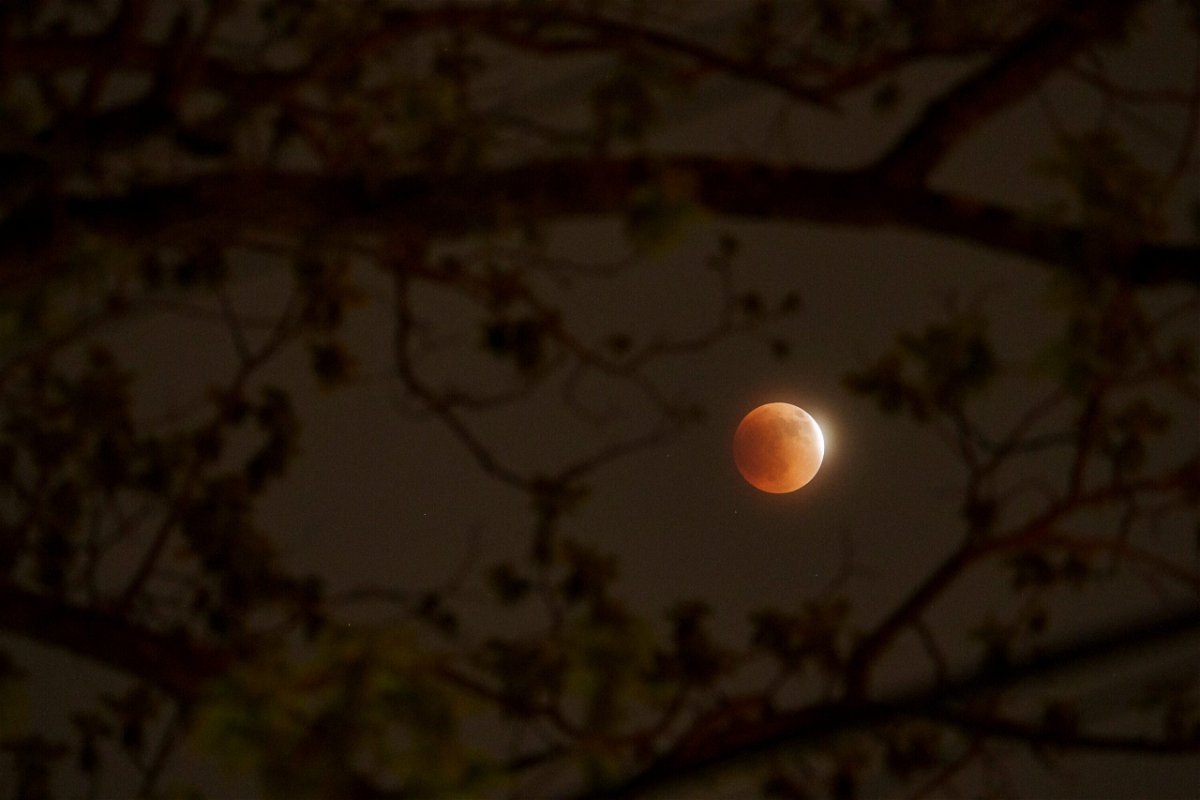Total lunar eclipse creates dazzling ‘blood moon’

The moon was bathed in coppery light over Columbus
By Katie Hunt, Megan Marples and Ashley Strickland, CNN
The moon glowed red on Sunday night and the early hours of Monday, after a total lunar eclipse that saw the sun, Earth and moon form a straight line in the night sky.
During a full lunar eclipse, the moon passes through the darkest part of the Earth’s shadow — the umbra. When the moon is within the umbra it gets a reddish hue because blue and green light get more easily scattered by dust particles in the atmosphere and orange and red colors remain more visible, according to NASA. Lunar eclipses are sometimes called blood moons because of this phenomenon.
People in South America and in the eastern part of North America were expected to get the best view of the lunar eclipse, said Noah Petro, chief of NASA’s Planetary Geology, Geophysics and Geochemistry Lab, before the eclipse. The total lunar eclipse was visible in much of Africa, Europe and South America and most of North America.
Stargazers around the world turned out to witness and capture the lunar event in images.
While the eclipse peaks for only a short amount of time, Petro said the moon would be bathed in coppery tones throughout the night, making it a particularly interesting celestial phenomenon to watch.
About two lunar eclipses occur each year, and the next will be a total lunar eclipse in November, Petro said. Then there will not be another total lunar eclipse until March 2025, he added.
There will be seven more full moons in 2022, according to The Old Farmer’s Almanac:
- June 14: Strawberry moon
- July 13: Buck moon
- August 11: Sturgeon moon
- September 10: Harvest moon
- October 9: Hunter’s moon
- November 8: Beaver moon
- December 7: Cold moon
These are the popularized names associated with the monthly full moons, originating with Native American tribes. The names vary from tribe to tribe because a full moon had different significance across the tribes month to month or season to season.
Lunar and solar eclipses
In addition to one more total lunar eclipse in 2022, there will also be a partial solar eclipse, according to The Old Farmer’s Almanac.
Partial solar eclipses occur when the moon passes in front of the sun but only blocks some of its light. Be sure to wear proper eclipse glasses to view solar eclipses safely as the sun’s light can be damaging to your eyes.
A partial solar eclipse on October 25 will be visible to those in Greenland, Iceland, Europe, northeastern Africa, the Middle East, western Asia, India and western China. It won’t be visible from North America.
After this weekend, the next total lunar eclipse will also be on display for those in Asia, Australia, the Pacific and South and North America on November 8 between 3:01 a.m. and 8:58 a.m. ET — but the moon will be setting for those in eastern regions of North America.
Meteor showers
Check out the remaining nine showers that will peak in 2022:
- Southern delta Aquariids: July 29-30
- Alpha Capricornids: July 30-31
- Perseids: August 11-12
- Orionids: October 20-21
- Southern Taurids: November 4-5
- Northern Taurids: November 11-12
- Leonids: November 17-18
- Geminids: December 13-14
- Ursids: December 21-22
If you live in an urban area, you may want to drive to a place that isn’t littered with city lights to get the best view.
Find an open area with a wide view of the sky. Make sure you have a chair or blanket so you can look straight up. And give your eyes about 20 to 30 minutes — without looking at your phone or other electronics — to adjust to the darkness so the meteors will be easier to spot.
The-CNN-Wire
™ & © 2022 Cable News Network, Inc., a WarnerMedia Company. All rights reserved.